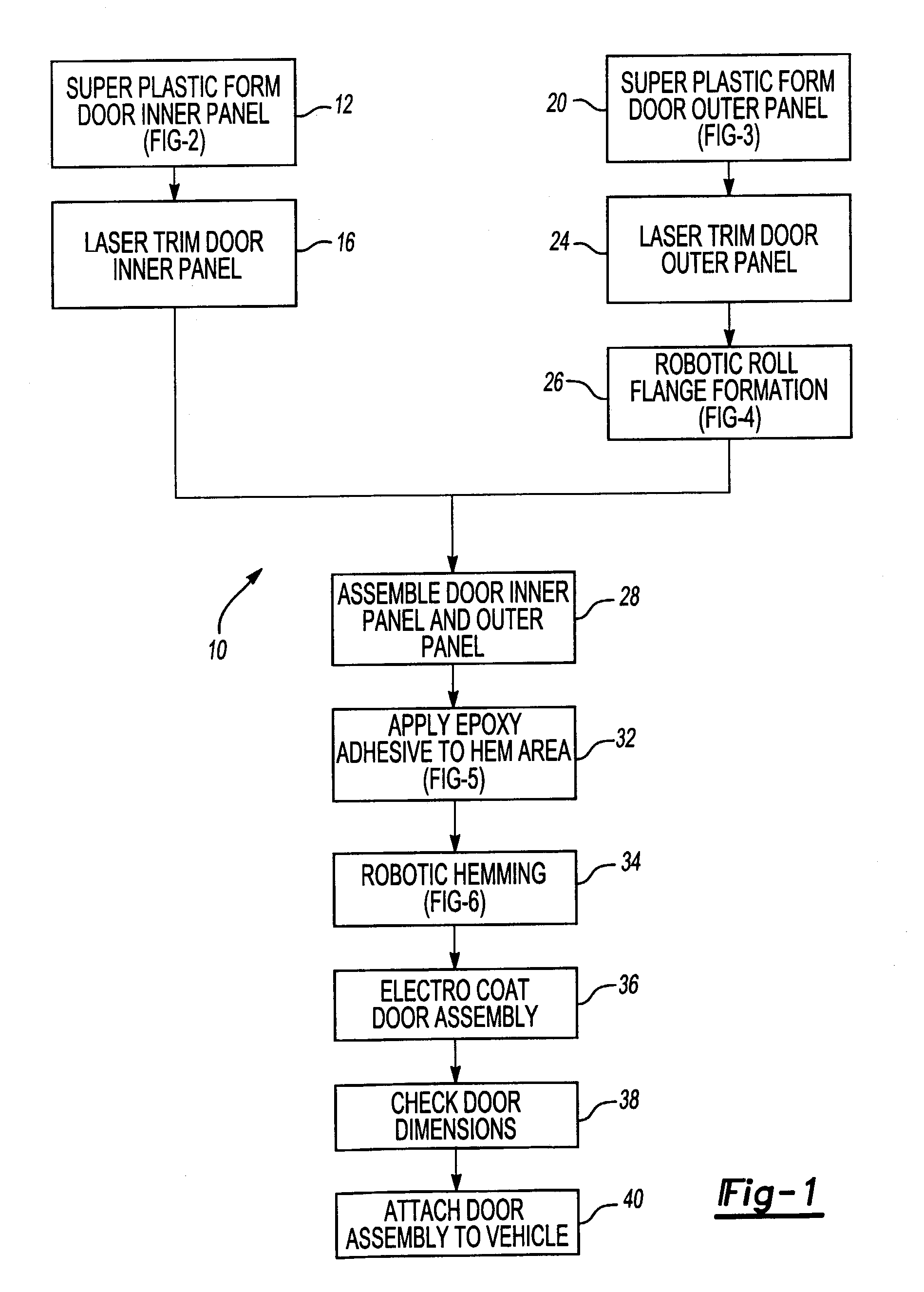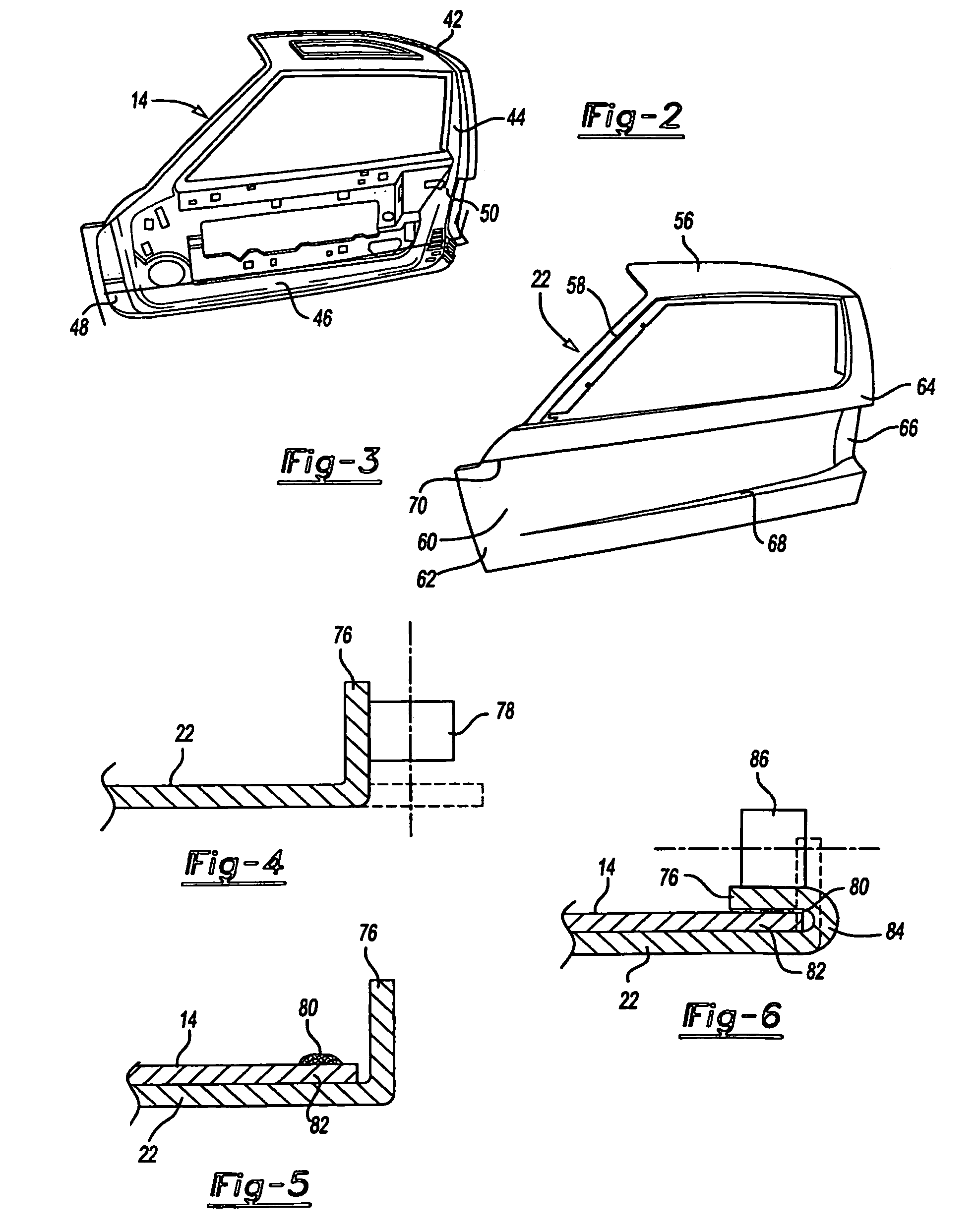Method of making a two-piece super-plastic formed lightweight aluminum door
a two-piece, lightweight technology, applied in the field of vehicle doors, can solve the problems of limited door making by stamping process, inability to make stamped doors with features, and the lack of dimensional control of conventional vehicle doors made with a large number of pieces
- Summary
- Abstract
- Description
- Claims
- Application Information
AI Technical Summary
Benefits of technology
Problems solved by technology
Method used
Image
Examples
Embodiment Construction
)
[0026]Referring to FIG. 1, the process, generally indicated by reference numeral 10, is illustrated by a flow chart. The process begins by super-plastic forming a door inner panel 14 as shown in FIG. 2. After forming, the door inner panel 14 is trimmed at 16. The trimming operation may be performed in two steps comprising a rough trim and a finished trim. The trimming operation may be performed by means of a laser trimming tool or by other trimming tools such as water jet cutting, routering or other mechanical shear or trimming tools.
[0027]In a parallel process a super-plastic forming operation is used to form the door outer panel 22 as illustrated in FIG. 3. The door outer panel 22 is trimmed, at 24, preferably with a laser trim tool, however, other methods of trimming may be used to form the outer panel 22 to its specified dimensions with a tolerance of 1 millimeter. A flange is formed preferably by a robotic roll forming machine at 26. The flange is shown schematically in FIG. 4...
PUM
| Property | Measurement | Unit |
|---|---|---|
| Temperature | aaaaa | aaaaa |
| Area | aaaaa | aaaaa |
| Strength | aaaaa | aaaaa |
Abstract
Description
Claims
Application Information
 Login to View More
Login to View More - Generate Ideas
- Intellectual Property
- Life Sciences
- Materials
- Tech Scout
- Unparalleled Data Quality
- Higher Quality Content
- 60% Fewer Hallucinations
Browse by: Latest US Patents, China's latest patents, Technical Efficacy Thesaurus, Application Domain, Technology Topic, Popular Technical Reports.
© 2025 PatSnap. All rights reserved.Legal|Privacy policy|Modern Slavery Act Transparency Statement|Sitemap|About US| Contact US: help@patsnap.com



